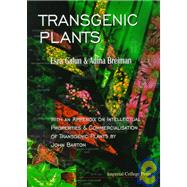
What is included with this book?
| Preface | v | ||||
|
1 | (12) | |||
|
1 | (3) | |||
|
4 | (2) | |||
|
6 | (6) | |||
|
12 | (1) | |||
|
13 | (31) | |||
|
13 | (21) | |||
|
13 | (4) | |||
|
17 | (7) | |||
|
24 | (4) | |||
|
28 | (4) | |||
|
32 | (2) | |||
|
34 | (7) | |||
|
36 | (2) | |||
|
38 | (3) | |||
|
41 | (3) | |||
|
44 | (30) | |||
|
44 | (5) | |||
|
49 | (4) | |||
|
49 | (1) | |||
|
50 | (2) | |||
|
52 | (1) | |||
|
53 | (1) | |||
|
53 | (21) | |||
|
54 | (6) | |||
|
55 | (1) | |||
|
56 | (3) | |||
|
59 | (1) | |||
|
60 | (2) | |||
|
62 | (4) | |||
|
64 | (1) | |||
|
64 | (1) | |||
|
65 | (1) | |||
|
66 | (1) | |||
|
66 | (6) | |||
|
68 | (1) | |||
|
68 | (1) | |||
|
69 | (1) | |||
|
70 | (2) | |||
|
72 | (1) | |||
|
72 | (2) | |||
|
74 | (49) | |||
|
78 | (2) | |||
|
80 | (1) | |||
|
81 | (3) | |||
|
84 | (3) | |||
|
87 | (2) | |||
|
89 | (3) | |||
|
89 | (1) | |||
|
90 | (1) | |||
|
91 | (1) | |||
|
92 | (1) | |||
|
93 | (11) | |||
|
94 | (1) | |||
|
95 | (2) | |||
|
97 | (1) | |||
|
98 | (1) | |||
|
99 | (3) | |||
|
102 | (2) | |||
|
104 | (4) | |||
|
108 | (4) | |||
|
112 | (4) | |||
|
116 | (4) | |||
|
120 | (3) | |||
|
123 | (89) | |||
|
125 | (46) | |||
|
125 | (39) | |||
|
125 | (11) | |||
|
136 | (6) | |||
|
142 | (3) | |||
|
145 | (1) | |||
|
146 | (8) | |||
|
154 | (10) | |||
|
164 | (1) | |||
|
164 | (7) | |||
|
166 | (5) | |||
|
171 | (1) | |||
|
171 | (25) | |||
|
172 | (19) | |||
|
191 | (5) | |||
|
196 | (11) | |||
|
197 | (1) | |||
|
198 | (9) | |||
|
207 | (1) | |||
|
207 | (5) | |||
|
212 | (37) | |||
|
214 | (3) | |||
|
217 | (32) | |||
|
221 | (2) | |||
|
223 | (11) | |||
|
223 | (3) | |||
|
226 | (8) | |||
|
234 | (15) | |||
|
236 | (2) | |||
|
238 | (1) | |||
|
239 | (2) | |||
|
241 | (1) | |||
|
242 | (2) | |||
|
244 | (5) | |||
|
249 | (5) | |||
| Appendix. Intellectual Property and Regulatory Requirements Affecting the Commercialisation of Transgenic Plants | 254 | (27) | |||
| A.1. The International Intellectual Property System | 255 | (2) | |||
| A.2. Plant Variety Protection | 257 | (3) | |||
| A.3. The Regular Patent System | 260 | (12) | |||
| A.3.1. Patent system concepts | 260 | (2) | |||
| A.3.2. Important differences among national systems | 262 | (2) | |||
| A.3.3. Typical coverage of actual patents | 264 | (5) | |||
| A.3.4. Implications for commercial firms | 269 | (3) | |||
| A.4. Trade Secrecy and Material Transfer Agreements | 272 | (2) | |||
| A.5. Biosafety and Product Labelling Considerations | 274 | (2) | |||
| A.6. Summary | 276 | (1) | |||
| References | 277 | (4) | |||
| References | 281 | (84) | |||
| Index | 365 |
The New copy of this book will include any supplemental materials advertised. Please check the title of the book to determine if it should include any access cards, study guides, lab manuals, CDs, etc.
The Used, Rental and eBook copies of this book are not guaranteed to include any supplemental materials. Typically, only the book itself is included. This is true even if the title states it includes any access cards, study guides, lab manuals, CDs, etc.